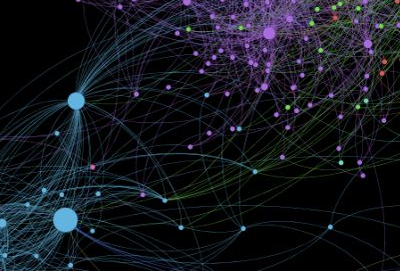“因果推断”的版本间的差异
小 (薄荷移动页面因果推断至因果推断 Causal inference) |
|
(没有差异)
| |
2020年10月24日 (六) 22:27的版本
因果推断 Causal inference是基于某一事件发生的条件得出关于因果联系结论的过程。因果推断与关联推理 inference of association的主要区别在于前者分析了当原因改变时结果变量的响应。[1][2]研究事件因何而起的科学被称为病因学 etiology。因果推断是因果推理 causal reasoning的一个例子。
定义
对某事原因的推断某事原因的过程被描述为:
- “...reason[ing] to the conclusion that something is, or is likely to be, the cause of something else.”(...推论得出某事是(或可能是)其他事情的原因这一结论。)[3]
- “Identification of the cause or causes of a phenomenon, by establishing covariation of cause and effect, a time-order relationship with the cause preceding the effect, and the elimination of plausible alternative causes.”(通过建立因果的共变模型,前因后果的时间顺序联系,以及消除其他可能的替代原因,从而对现象的一个或多个原因进行确认。)[4]
方法
流行病学运用不同的流行病模型来收集和衡量危险因素和结果,以及判定两者之间的联系。一个假说被提出来后,然后进行统计学假设检验 Statistical hypothesis testing。这种统计学推断有助于判断数据是否由偶然性引起,也被称为随机变异 random variation,还是确实相关以及相关性的强弱。然而,相关不意味着因果,因此还需使用其他方法来推断其因果关系。
常见的因果推断框架有结构方程模型 structural equation modeling和Rubin因果模型 Rubin causal model。
在流行病学领域 In epidemiology
流行病学研究特定生物群体的健康和疾病模式 patterns,以推断原因和结果。暴露 exposure 于一般认为的危险因素 risk factor和疾病之间可能存在关联,但不等于确定因果关系,因为相关不意味着因果。从历史上看,自19世纪,科赫法则 Koch's postulates就被用来判断一种微生物是否是引起某种疾病的病因。在20世纪,布拉德福德·希尔准则 Bradford Hill criteria[5]已经被用来评估微生物学之外的变量的因果关系,尽管这些标准不是确定因果关系的唯一方法。
分子流行病学中(所)研究的现象,包括遗传学,都是生物分子水平的,其中生物标志物是原因或结果的证据。
在新兴的分子病理流行病学 molecular pathological epidemiology (MPE)交叉学科领域,最近的一个趋势(截至2014年)是确定在病变组织或细胞内,暴露迹象 exposure 在分子病理学 molecular pathology影响的证据。将暴露迹象与疾病的分子病理特征联系起来可以帮助评估因果关系。基于特定疾病的异质性的固有特征、独特的疾病原理等,研究疾病表现型 phenotyping及其亚型 subtyping 现在是生物医学和公共卫生科学的趋势。比如个体化医疗和精准医疗等。
在计算机科学领域 In computer science
从联合观测数据中确定两个时间无关变量(例如X和Y)的因果关系,利用某些模型在X→Y和Y→X方向上的证据之间的不对称性。Determination of cause and effect from joint observational data for two time-independent variables, say X and Y, has been tackled using asymmetry between evidence for some model in the directions, X → Y and Y → X.主要的方法基于算法信息理论 Algorithmic information theory(AIT)模型和噪声模型 noise models。
算法信息模型 Algorithmic information models
比较两个同时输出 X 和 Y 的程序。
- 根据未压缩的Y存储Y和X的压缩型 Store Y and a compressed form of X in terms of uncompressed Y.
- 根据未压缩的X存储X和Y的压缩型 Store X and a compressed form of Y in terms of uncompressed X.
最短的此类程序表明,未压缩的存储变量更有可能导致计算变量。The shortest such program implies the uncompressed stored variable more-likely causes the computed variable.[6][7]
噪音模型 Noise models
在模型中引入一个独立的噪声项,以对比两个方向的证据。下面是一些假设 Y → X 且具有噪声 E 的噪声模型:
- 加性噪声 Additive noise:[8] [math]\displaystyle{ Y = F(X)+E }[/math]
- 线性噪声 Linear noise:[9] [math]\displaystyle{ Y = pX + qE }[/math]
- 非线性后置 Post-non-linear:[10] [math]\displaystyle{ Y = G(F(X)+E) }[/math]
- 异方差噪声 Heteroskedastic noise:[math]\displaystyle{ Y = F(X)+E.G(X) }[/math]
- 功能性噪声 Functional noise:[11] [math]\displaystyle{ Y = F(X,E) }[/math]
上述模型均基于以下假设:
- Y 不存在其他原因 There are no other causes of Y 。
- X 和 E 不存在共同的原因 X and E have no common causes 。
- 原因的分布独立于因果机制 Distribution of cause is independent from causal mechanisms 。
在直观的层面上,联合分布 P(起因 , 结果)到 P(起因)* P(结果 | 起因)拆分的主意通常产生模型的总复杂性低于将 P(起因 , 结果)到 P(结果)* P(起因 | 结果)的拆分。尽管“复杂性”的概念在直觉上很吸引人,但对于应该如何精确定义它却并不显而易见。[11]另一种不同类族的方法尝试从大量被标记的数据中发现因果的“足迹”,并且允许预测更灵活的因果关系。[12]
在统计学和经济学领域 In statistics and economics
在统计学和经济学中,因果关系通常通过[[回归分析来检验。有几种方法可以用来鉴别真实的因果关系和虚假的相关性。第一,经济学家根据经济理论(理论驱动的计量经济学)构建回归模型,从而确定因果关系的方向。例如,如果研究降雨与商品未来价格之间的依赖关系,那么广义上建构的理论表明,降雨可以影响价格,但未来价格不能改变降雨量。[13] . 第二,工具变量 instrumental variables(IV)技术可以通过引入其他已知不受因变量的影响的工具变量来消除任何逆向因果关系。第三,在正向回归中只包含在时间上早于因变量的变量,就可以引用结果不能先于原因的原则。由于偏相关 partial correlations是对称的,不能仅仅根据一方面的相关性来确定因果关系的方向。基于因果关系的概率观点 probabilistic view,经济学家假设,在时间上原因必须先于其结果。这导致经济学家使用较早发生的现象作为自变量,并开发适用于时间序列分析的因果关系的计量经济学的检验方法(例如,格兰杰因果检验 Granger-causality tests)[14]。第四,有些方法包括了其他回归因素以确保混淆变量不会导致回归项过于虚假地呈现这种现象十分重要。通过使用大规模样本和交叉验证来检查在回归中未使用的数据是否保持了相关,这样可以排除因巧合的相关性,而不是反映实际依赖内在过程的相关性。但在遭受多重共线性 multicollinearity问题困扰的领域,如宏观经济学,原则上不可能包括所有混淆因素,因此计量经济模型容易出现共因谬误 common-cause fallacy[15]。近年来,以设计为基础的计量经济学活动已经推广至使用自然实验和准实验研究设计来解决虚假相关 spurious correlations的问题[16]。
在社会科学领域 In social science
社会科学越来越倾向用定量框架来评估因果关系。框架中的很大一部分已经被描述为一种提供更严格的社会科学方法social science methodology的手段。1994年,加里·金 Gary King、罗伯特·基奥汉 Robert Keohane和西德尼·维尔巴 Sidney Verba合著的《设计社会学问卷 Designing Social Inquiry》对政治科学产生了重大影响。King、Keohane和Verba(通常缩写为 KKV)建议同时采用定量和定性方法的研究人员采用统计推断的语言,以便更清楚地了解他们感兴趣的主题和分析单位。King, Keohane, and Verba (often abbreviated as KKV) recommended that researchers applying both quantitative and qualitative methods adopt the language of statistical inference to be clearer about their subjects of interest and units of analysis.[17][18]定量方法的支持者也越来越多地采用唐纳德·鲁宾 Donald Rubin开发的潜在结果框架 potential outcomes framework作为推断因果关系的标准。
合适地应用定量方法来推断因果关系的相关争论导致了对研究可重复性的更多关注。对广泛被使用的方法持批评态度的人认为,研究人员利用数据挖掘 Data dredging或P值篡改 p-hacking技术以在虚假相关的基础上发表文章[19]。为了避免这种情况的发生,一些研究人员主张在进行研究之前预注册preregister他们的研究设计,这样他们就不会无意中过分强调一项不可复制的发现,这项发现并非最初的调查对象,而是在数据分析过程中具有统计显著性[20]。社会科学内部关于方法论和可重复性的争论有时是激烈的。
尽管在潜在结果框架中大部分重点仍然放在统计推论上,但社会科学方法学家已经开发出使用定性和定量方法进行因果推断的新工具,有时被称为混合方法。[21][22]各种方法论的支持者认为它更适合不同对象的研究 different subjects of study。
社会学家 Herbert Smith 和政治学家 James Mahoney 、 Gary Goertz 引用了统计学家 Paul Holland 的观察结果,Paul Holland在1986年发表了一篇名为《统计学和因果推断 Statistics and Causal Inference》的文章,认为推论统计学最适合于评估“因果效应”。[23][24]定性方法学家认为,形式化的因果关系模型,包括过程追踪 process tracing和模糊集理论 fuzzy set theory,通过在某个案例研究内识别关键因素或在多个案例研究之间比较的过程提供了推断因果关系的机会。[18] 这些方法对于那些潜在观察结果的数量受限或存在混淆变量从而限制统计推论适用性的课题也是有价值的。
参见
参考文献
- ↑ Pearl, Judea (1 January 2009). "Causal inference in statistics: An overview" (PDF). Statistics Surveys. 3: 96–146. doi:10.1214/09-SS057.
- ↑ Morgan, Stephen; Winship, Chris (2007). Counterfactuals and Causal inference. Cambridge University Press. ISBN 978-0-521-67193-4.
- ↑ "causal inference". Encyclopædia Britannica, Inc. Retrieved 24 August 2014.
- ↑ John Shaughnessy; Eugene Zechmeister; Jeanne Zechmeister (2000). Research Methods in Psychology. McGraw-Hill Humanities/Social Sciences/Languages. pp. Chapter 1 : Introduction. ISBN 978-0077825362. http://www.mhhe.com/socscience/psychology/shaugh/ch01_concepts.html. Retrieved 24 August 2014.
- ↑ Hill, Austin Bradford (1965). "The Environment and Disease: Association or Causation?". Proceedings of the Royal Society of Medicine. 58 (5): 295–300. doi:10.1177/003591576505800503. PMC 1898525. PMID 14283879.
- ↑ Kailash Budhathoki and Jilles Vreeken "Causal Inference by Compression" 2016 IEEE 16th International Conference on Data Mining (ICDM)
- ↑ Marx, Alexander; Vreeken, Jilles (2018). "Telling cause from effect by local and global regression". Knowledge and Information Systems. 60 (3): 1277–1305. doi:10.1007/s10115-018-1286-7.
- ↑ Hoyer, Patrik O., et al. "Nonlinear causal discovery with additive noise models." NIPS. Vol. 21. 2008.
- ↑ Shimizu, Shohei; et al. (2011). "DirectLiNGAM: A direct method for learning a linear non-Gaussian structural equation model" (PDF). The Journal of Machine Learning Research. 12: 1225–1248.
- ↑ Zhang, Kun, and Aapo Hyvärinen. "On the identifiability of the post-nonlinear causal model." Proceedings of the Twenty-Fifth Conference on Uncertainty in Artificial Intelligence. AUAI Press, 2009.
- ↑ 11.0 11.1 Mooij, Joris M., et al. "Probabilistic latent variable models for distinguishing between cause and effect." NIPS. 2010.
- ↑ Lopez-Paz, David, et al. "Towards a learning theory of cause-effect inference" ICML. 2015
- ↑ Simon, Herbert (1977). Models of Discovery. Dordrecht: Springer. p. 52.
- ↑ Maziarz, Mariusz (2020). The Philosophy of Causality in Economics: Causal Inferences and Policy Proposals. New York: Routledge.
- ↑ Henschen, Tobias (2018). "The in-principle inconclusiveness of causal evidence in macroeconomics". European Journal for Philosophy of Science. 8: 709–733.
- ↑ Angrist Joshua & Pischke Jörn-Steffen (2008). Mostly Harmless Econometrics: An Empiricist's Companion. Princeton: Princeton University Press.
- ↑ King, Gary (2012). Designing social inquiry : scientific inference in qualitative research. Princeton Univ. Press. ISBN 978-0691034713.
- ↑ 18.0 18.1 Mahoney, James (January 2010). "After KKV". World Politics. 62 (1): 120–147. doi:10.1017/S0043887109990220.
- ↑ Dominus, Susan (18 October 2017). "When the Revolution Came for Amy Cuddy". The New York Times (in English). ISSN 0362-4331. Retrieved 2019-03-02.
- ↑ "The Statistical Crisis in Science". American Scientist (in English). 6 February 2017. Retrieved 2019-04-18.
- ↑ Creswell, John W.; Clark, Vicki L. Plano (2011) (in en). Designing and Conducting Mixed Methods Research. SAGE Publications. ISBN 9781412975179. https://books.google.com/books/about/Designing_and_Conducting_Mixed_Methods_R.html?id=YcdlPWPJRBcC.
- ↑ Seawright, Jason (September 2016) (in en). Multi-Method Social Science by Jason Seawright. doi:10.1017/CBO9781316160831. ISBN 9781316160831. https://www.cambridge.org/core/books/multimethod-social-science/286C2742878FBCC6225E2F10D6095A0C.
- ↑ Smith, Herbert L. (10 February 2014). "Effects of Causes and Causes of Effects: Some Remarks from the Sociological Side". Sociological Methods and Research. 43 (3): 406–415. doi:10.1177/0049124114521149. PMC 4251584. PMID 25477697.
- ↑ Goertz, Gary; Mahoney, James (2006). "A Tale of Two Cultures: Contrasting Quantitative and Qualitative Research". Political Analysis (in English). 14 (3): 227–249. doi:10.1093/pan/mpj017. ISSN 1047-1987.
参考书目
- Hernán, MA; Robins, JM (2020-01-21). Causal Inference: What If. Barnsley: Boca Raton: Chapman & Hall/CRC. https://www.hsph.harvard.edu/miguel-hernan/causal-inference-book/.
其他链接
编者推荐
集智课程推荐
社交网络中的因果推断
本课程中,将简要介绍一些基本的因果推断策略,并聚焦社会网络分析中的因果推断问题,涉及社会网络实验设计、固定样本、工具变量和敏感度分析等。
基于地球科学系统的因果推断
本课程来自复杂系统自动建模读书会第11期,由黄玉、王硕和胡国辉带来与地球科学系统相关的论文讲解。
书籍推荐
为什么:关于因果关系的新科学
在本书中,人工智能领域的权威专家Judea Pearl及其同事领导的因果关系革命突破多年的迷雾,厘清了知识的本质,确立了因果关系研究在科学探索中的核心地位。
本中文词条由嘉树参与编译,Zc1234567审校,薄荷编辑,欢迎在讨论页面留言。
本词条内容源自wikipedia及公开资料,遵守 CC3.0协议。
